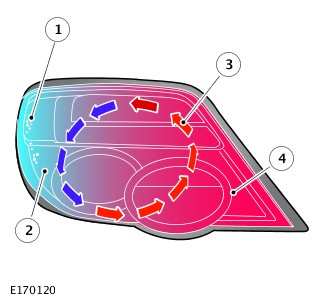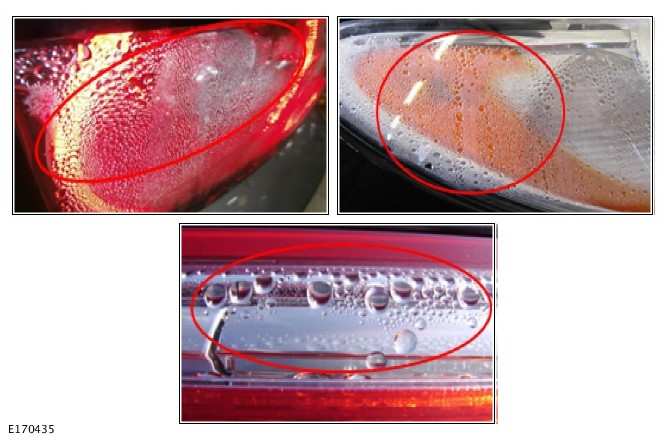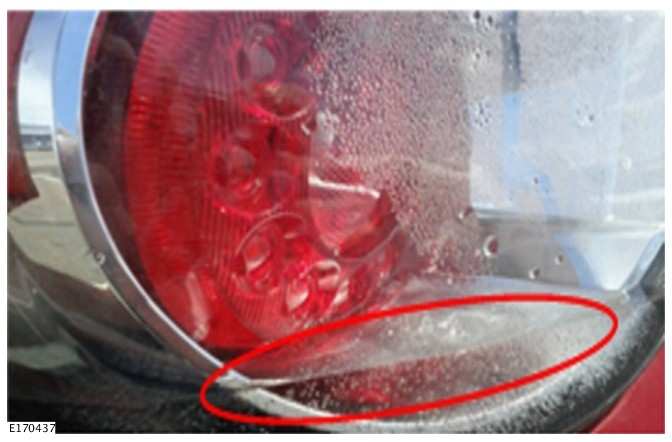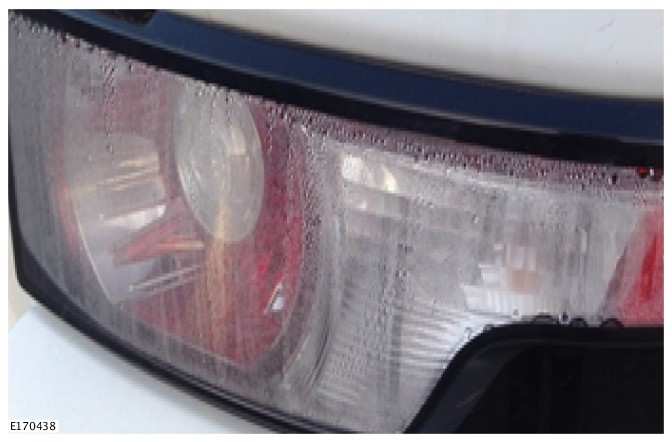| “This site contains affiliate links for which OEMDTC may be compensated” |
TECHNICAL BULLETIN
JTB00379NAS1
12 SEP 2014
SECTION: 417-00
Front / Rear Lamp Condensation – Information Only
AFFECTED VEHICLE RANGE:
XK Range (X150)
Model Year: 2010-2014
VIN: B32753-B56791
F-TYPE (X152)
Model Year: 2014 Onwards
VIN: K00001 Onwards
XF (X250)
Model Year: 2010 Onwards
VIN: R36912 Onwards
XJ Range (X351)
Model Year: 2010 Onwards
VIN: V00001 Onwards
MARKETS:
NAS
CONDITION SUMMARY:
Situation: Condensation / mist may appear on the inside of front and/or rear exterior lamps.
Cause: Condensation/mist is a natural phenomenon which can occur when there is a temperature difference between the inside and outside of the lamp unit. This condensation is considered to be as a result of normal atmospheric conditions and replacing the light unit will not correct this symptom. With the introduction of clear lenses condensation is likely to be more noticeable but does not affect the performance of the lamp. Condensation will clear when the lights have been on for some length of time and in warmer ambient temperatures.
Action: A lamp that exhibits condensation should be evaluated after a drying time where all the functions have been operated for a minimum of 30 minutes. If the condensation has started to clear during this time it indicates that the lamps sealing has NOT been breached and will eventually clear. The lamp must NOT be replaced.
SERVICE INFORMATION:
CAUTION: Make sure that bulb covers are correctly installed and make sure that all breathers (tubes or membrane patches) are free from dirt and debris and are fitted correctly as these can all lead to the formation of condensation. If any of these are determined to be the cause of the condensation, measures should be taken to dry out the lamps and to make sure that the bulb covers are installed correctly.
NOTE: The Owner’s handbook clearly states that condensation may form on the inside of lamp lenses and is caused by atmospheric conditions. That it is not detrimental to lamp performance and will clear during normal usage.
NOTE: Pools of water and high levels of condensation would indicate that the lamps sealing has been compromised. Check for damage and inspect the condition of caps and breathers.
NOTE: Differing layout on the opposing sides of the vehicle can lead to different levels of condensation inside the lamps from side to side. As a result of this the rate at which condensation clears may also differ from side to side.
NOTE: Photographic evidence of the condensation levels prior to and after drying time should be provided with every returned part. Failure to do so may result in the claim being rejected.
NOTE: This information bulletin contains examples of normal condensation generated from atmospheric conditions. A thin mist can form on the interior of clear plastic lenses, this is not detrimental to the lamp’s performance. This thin mist will eventually clear through normal use, exiting through the lamp’s venting system.
- Condensation or moisture can be more noticeable during the months of spring and autumn when there is a likelihood of a higher moisture content in the air. It can occur when there is a temperature difference on either side of the lens surface. This can often be seen in the evening and morning sunshine or when cold water makes contact with a warm lamp lens. When a lamp is warmed unevenly by the sunshine the surface area in direct sunlight will be approximately 10°C higher than the remainder of the lamp. When warm air circulates within the lamp and makes contact with the colder surfaces moisture can appear on the lens as water condenses out of the warmer air. Condensation may occur when washing a vehicle with cold water on a warm day or when the lamps are warm and vice versa. This is the same phenomena as with the formation of dew on the surface of a glass window pane.
- The illustration shows the following.
- Moisture formation
- Cool surfaces
- Air circulation
- Warm surfaces
These are examples of normal exterior lamp condensation. This would NOT be covered by Warranty and the lamp should not be replaced.
- No visible streaks, drip marks or droplets in the condensation mist.
- Condensation mist that does not obstruct the view of the lamp interior.
These are examples of abnormal exterior lamp condensation that may be covered by Warranty. Warranty may be accepted providing the lamp does not exhibit any visible signs of external damage.
- Large water droplets.
- Drip marks or streaks in the condensation.
- Standing water within the lamp.
- A thick mist covering the lens with water droplets.
